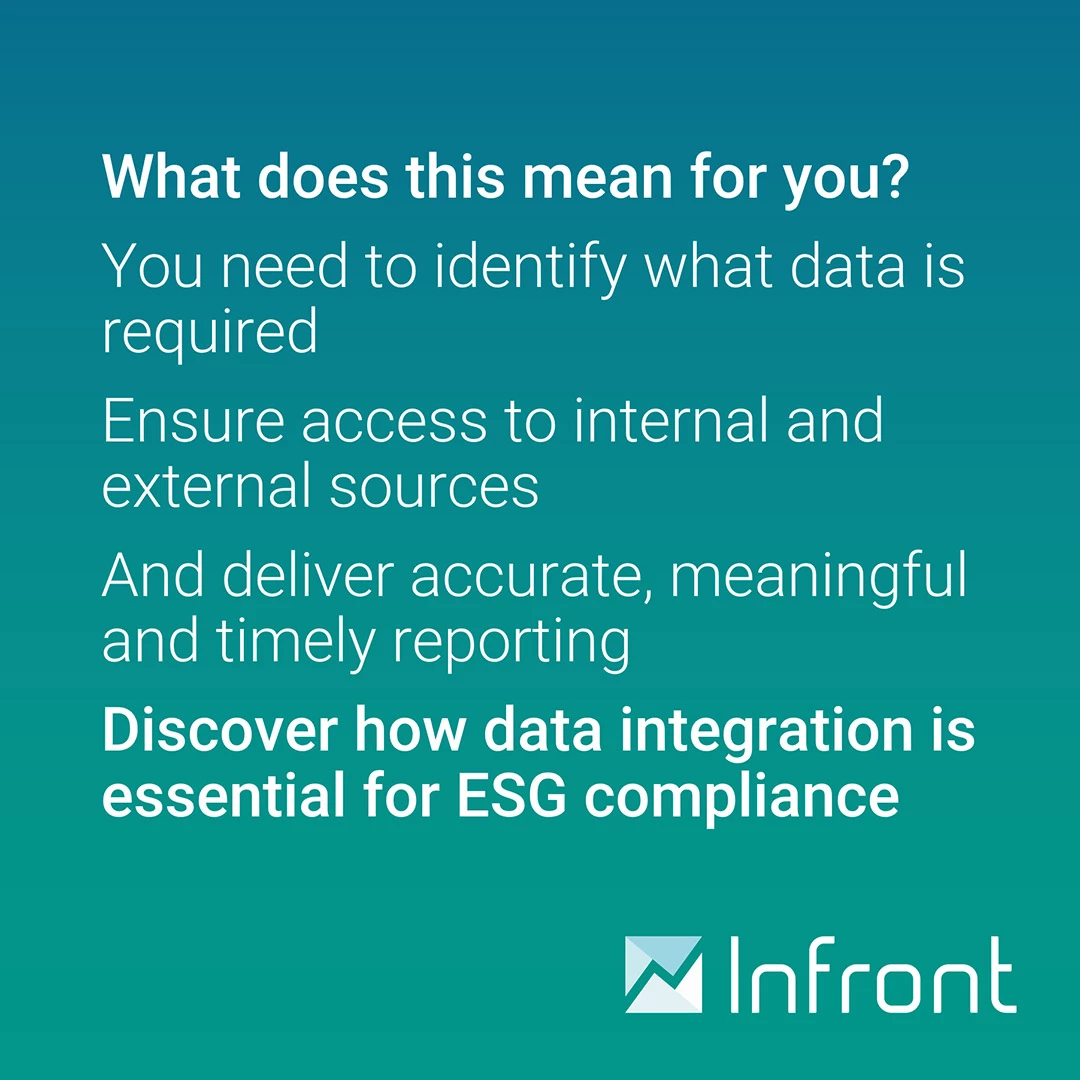Supporting ESG through data integration
Financial firms need to define and deploy clear ESG data strategies to source the necessary ESG data and integrate it in their workflow with the aim to gain a holistic view of their sustainability risks.

In a previous article, we looked at some of the European regulations that are being introduced around Environmental, Social & Governance (ESG) reporting, and discussed why it is important for firms to have consistent, meaningful ESG data, presented in a clear and transparent way.
In order to achieve this, firms need to define and deploy clear ESG data strategies, not only to source the appropriate ESG data, but also to integrate it with other data sets such as market data, account data and portfolio data. With the right approach, they can generate a holistic view of their sustainability risks; for their own benefit, for that of their clients and investors, and for compliance with ESG regulations.
EU Taxonomy
From an Environmental perspective, it is important for firms to consider the EU Taxonomy Regulation - introduced recently as an amendment to the Sustainable Finance Disclosure Regulation (SFDR) – as this provides a classification mechanism for assessing whether investments are environmentally sustainable.
It is worth noting that the Taxonomy focuses on activities, rather than entities. This means the Taxonomy can be used by firms that pursue both sustainable and non-sustainable activities, classified accordingly.
The Taxonomy defines six environmental objectives:
- Climate change mitigation
- Climate change adaption
- Sustainable use and protection of water and marine resources
- Transition to a circular economy, waste prevention and recycling
- Pollution prevention and ion control
- Protection of healthy ecosystems
Technical Screening Criteria (TSC) are currently being introduced for all six of these objectives, with legislation for the first two (climate change mitigation and adaption) now finalised. To measure performance thresholds against these objectives and to prevent greenwashing, market participants will be required to use these criteria – with real data - to substantiate any sustainability claims they make.
Product/Instrument Categories
Under SFDR, financial products are divided into three different types. Investment firms are required to classify products as either an Article 9, 8 or 6 product, depending on its level of sustainability.
‘Dark green’ products (Article 9) are those with an intended sustainability effect and a non-financial objective at the core of their offering (such as reducing CO2 emissions for example).
‘Light Green’ products (Article 8) are those that promote environmental or social characteristics. Such promotion could include screening out certain environmentally harmful investments or considering ESG ratings when making investment decisions.
The third type is all other products (Article 6). Regardless of whether the product is promoted as ESG or not, firms are still required to disclose the integration of sustainability risks within them.
Supporting an ESG Data Strategy
To report their investment activities according to the classifications and objectives outlined above, and to measure performance against their ESG objectives at every level - fund level, portfolio level and product level - firms will need a comprehensive data strategy. Such a strategy will involve identifying what data is required - from both internal systems and external sources - and addressing the challenge of how to integrate that data with other data sets, so that reporting is meaningful, accurate and timely.
At Infront, we offer a range of services to support such strategies. From a data sourcing perspective, we collaborate with WM Data Services, to make comprehensive ESG data sets available to our clients, along with all of the other data sets we offer.
And to facilitate ESG data integration, the Infront Data Manager offers quick and easy connectivity to our comprehensive data universe, which includes not only market data and ESG data, but also internal and calculated data (around funds and portfolios for example).
By helping clients with not only their ESG data sourcing, but also with integrating that data at every level, Infront ensures their sustainability risk and reporting needs are fully supported.





 Back to all news
Back to all news
